I. Definition
An
apron feeder is a reliable feeding method suitable for conveying lumpy, abrasive, heavy-duty, and high-temperature materials. It serves as a more robust and durable feeding solution compared to traditional belt feeders. Apron feeders can be used in various applications, adapting to heavy loads and high-impact materials while delivering materials at a uniform rate for optimal feeding of downstream equipment.
II. Working Principle
An apron feeder transports materials through chain-driven plate traction. The motor drives a speed reducer to reduce rotation speed and increase torque, driving the main sprocket to rotate and pulling a closed chain and the plates fixed to it to operate cyclically. The plates form a continuous carrying surface that receives materials (such as ore and coal) falling from the inlet, conveying them along a horizontal or inclined frame (with a maximum inclination of 25°) to the discharge end, where materials are unloaded by gravity or baffles.
Apron Feeder is mainly composed of main shaft device, pans, driving device, frame, Supporting roller, return rollers, tail wheel tension device and so on.
The tension device is used to tighten and adjust the horizontal position of the chain to ensure that the chain tightness is moderate and make it run smoothly. When the pans are suddenly impacted by the material, the composite spring can play a buffer role to protect the pans and other components from damage.
III. Characteristics of Apron Feeders
Our apron feeders are robustly designed to withstand heavy loads and high impacts, offering durability and reliability.
1. Heavy-Duty Design
The feeder’s sturdy steel support frame is equipped with buffer rails to limit pan deflection, eliminating permanent bending of the pan. It can withstand various load conditions during startup and operation. Lifting lugs are installed at appropriate positions on the frame for easy installation and future maintenance.
2. Horizontal or Inclined Installation
Apron feeders can be installed horizontally or inclined, adapting to different topographical structures. The high-inclination design also enables compact installations and shortens the feeder’s length, reducing investment costs.
3. Adjustable Throughput
Apron feeders can be equipped with frequency converters to change the main motor’s speed, thereby adjusting the chain speed and controlling the feeder’s throughput.
4. Simple Operation and Maintenance
The heavy-duty design ensures high availability, easy operation, low maintenance, low operating costs, and higher profitability.
5. Economic and Reliable
We provide customized machines in various sizes and parameters. Our apron feeders are suitable for multiple applications, offering heavy-duty feeding and extraction capabilities. With a robust structure, long service life of core components, and low maintenance costs, they reduce downtime, improve production efficiency, and enhance profitability.
IV. Main Purposes
1. Uniform Feeding Before Primary Crushing
Apron feeders accurately feed large materials such as raw ore, coal, and limestone into jaw or gyratory crushers. Driven by a variable-frequency motor and combined with real-time level sensors, they ensure minimal fluctuations in feeding flow, avoiding equipment impacts or blockages caused by manual dumping. When over-sized materials are detected, a metal detector triggers a shutdown alarm, ensuring stability for the first stage of the production line.
2. High-Temperature Material Conveying
Apron feeders can handle high-temperature materials (300–600°C), such as sintered ore and hot cement clinker, with heat-resistant steel plates and bearing designs ensuring stable operation. Independent air-cooling systems for bearings maintain controlled temperatures, preventing lubrication failure.
3. Handling Abrasive Materials
When conveying high-hardness materials like iron ore and basalt, high-manganese steel plates undergo water toughening treatment to increase surface hardness, significantly enhancing impact and wear resistance. Labyrinth seals at plate joints prevent material entrapment, while ceramic-lined bottom plates form a composite wear-resistant layer. Tested wear-resistant plate life spans 3–5 years, 2–3 times longer than ordinary carbon steel.
4. Replacing Traditional Vibrating Feeders
In scenarios involving sticky and wet materials (e.g., clay, wet coal), compared to traditional vibrating feeders prone to blockages due to amplitude decay, our apron feeders feature vertical or negative-angle walls. This unique design effectively prevents material adhesion and stagnation on internal walls, avoiding conveying delays and blockages caused by material accumulation. Meanwhile, the gravitational component from the inclined angle enhances material sliding, ensuring continuous and uniform feeding of high-humidity and high-viscosity materials, significantly improving conveying efficiency and system stability in complex conditions.
5. Long-Distance and High-Inclination Conveying
With a maximum conveying inclination of 25° (compared to 15° for ordinary belt conveyors), apron feeders are suitable for mines with limited terrain.
V. Application Scenarios of Apron Feeders
Apron feeders are widely used for various feeding, unloading, and discharging purposes. Below are specific application scenarios for our company’s apron feeders:
1. Crusher Feeding
Suitable for all types of materials, including cement, iron ore, sand, coal, limestone, and fertilizers. Our apron feeders can unload materials up to 1,500 mm in size and handle various abrasive materials, with each unit customized for the crusher.
2. Truck Unloading
Our apron feeders can directly receive mining materials from dump trucks, unload multiple trucks at once, and withstand high impact loads. They are also suitable for combined unloading with other transportation equipment.
3. Hopper Unloading
With a pan width of up to 3,000 mm, our apron feeders are suitable for unloading large materials. The vertical or negative-angle walls prevent material adhesion in highly viscous scenarios, while the inclined angle enhances material sliding. The reasonable pan design also facilitates cleaning.
4. Stockpile Reclaiming
Stockpile materials often have high bulk density, poor flowability, and strict discharge precision requirements. Apron feeders, optimized for stockpile reclaiming with rigid plate combinations and low-speed stable traction, address issues like jamming, severe wear, and flow fluctuations in traditional equipment when handling high-viscosity and high-bulk-density materials, improving inventory management efficiency.
VI. Conclusion
Apron feeders are primarily used for uniform feeding before primary crushing, high-temperature material conveying, handling abrasive materials, replacing traditional vibrating feeders for sticky/wet materials, and long-distance/high-inclination conveying. Our company's apron feeders can unload materials of any size range and can also be tailored to crushers to meet everyone's diverse needs and provide high-performance, high-quality and efficient equipment to global customers.


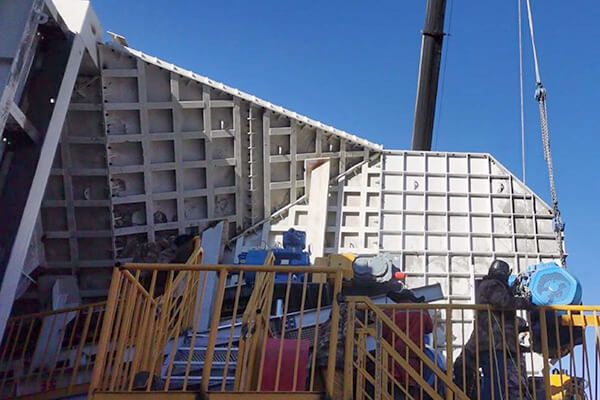
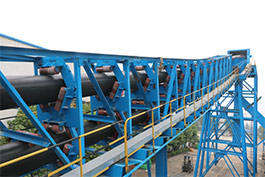
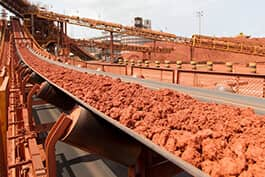
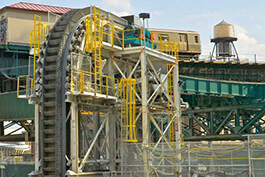
.jpg)
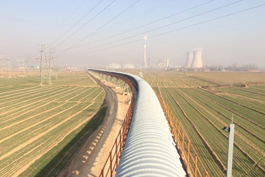
.jpg)
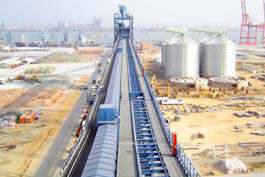
.jpg)


